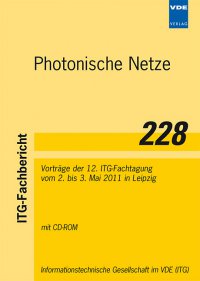Parametric Amplification as an Option for Optical Broadband Amplification
Conference: Photonische Netze - 12. ITG-Fachtagung
05/02/2011 - 05/03/2011 at Leipzig, Germany
Proceedings: Photonische Netze
Pages: 8Language: englishTyp: PDF
Personal VDE Members are entitled to a 10% discount on this title
Authors:
Elschner, R.; Richter, T.; Schubert, C. (Fraunhofer Institut für Nachrichtentechnik, Heinrich-Hertz-Institut, Einsteinufer 37, 10587 Berlin, Germany)
Abstract:
Optical parametric amplification (OPA) will be discussed as an option for optical broadband amplification beside Erbium-doped fiber amplifiers (EDFA) and distributed Raman amplification (DRA). Fiber-based OPAs rely on the nonlinear effect of four-wave mixing (FWM) that occurs in silica fibers due to the underlying Kerr effect. The amplification of the input signal is realized by an energy transfer from one or two pump waves. High gain (> 30 dB) with pump powers < 1 W is yielded using special highly-nonlinear fibers (HNLF) that provide a small effective area and therefore high power densities. The largest advantage of OPAs against EDFAs is the flexibility of the gain spectrum. Both the center wavelength (e.g. S-, C-, L-band) and the bandwidth ( > 50 nm) of the amplifier can be adjusted by appropriately engineering the dispersion profile of the HNLF and by the choice of the pump signal(s) wavelength(s). Because of the low-loss coupling to the standard single-mode fiber and the inherently low-noise amplification, noise figures similar to EDFAs (> 4 dB) can be realized. A disadvantage is the polarization-dependence of the FWM process that has to be mitigated by polarization-diversity schemes. The usage of a HNLF-based loop which relies on the counter-propagation of the both signal polarizations is discussed in detail and results of system experiments using directly-detected 112 Gb/s-PolMux-DQPSK signals are presented. Furthermore, FWM is always accompanied by self- and cross-phase modulation (SPM and XPM). Due to the ultrafast response time of the Kerr nonlinearity, both effects can lead to distortions of the signal phase. This is discussed in detail and system experiments using coherently-detected 112-Gb/s 16QAM signals are presented.


